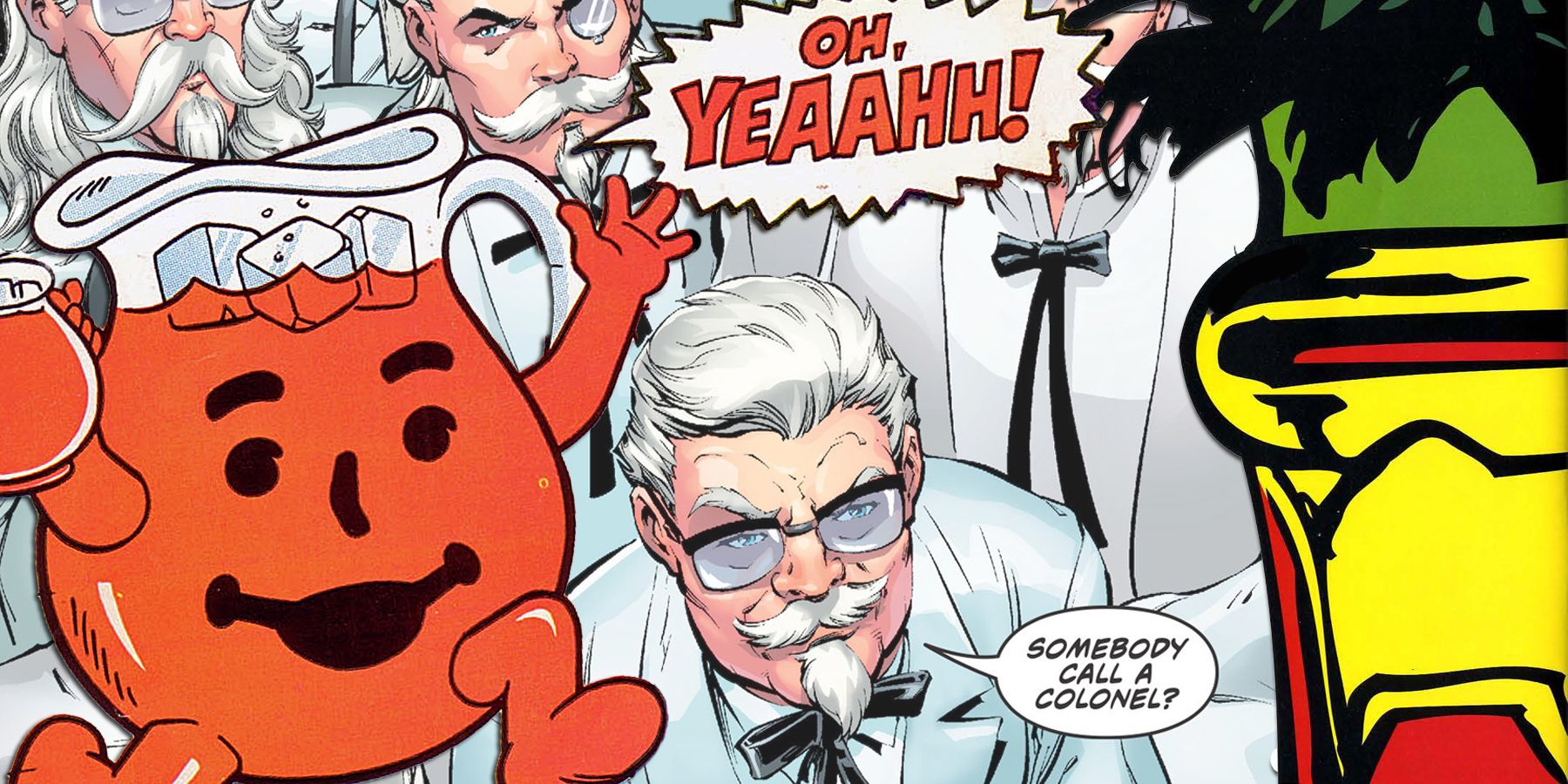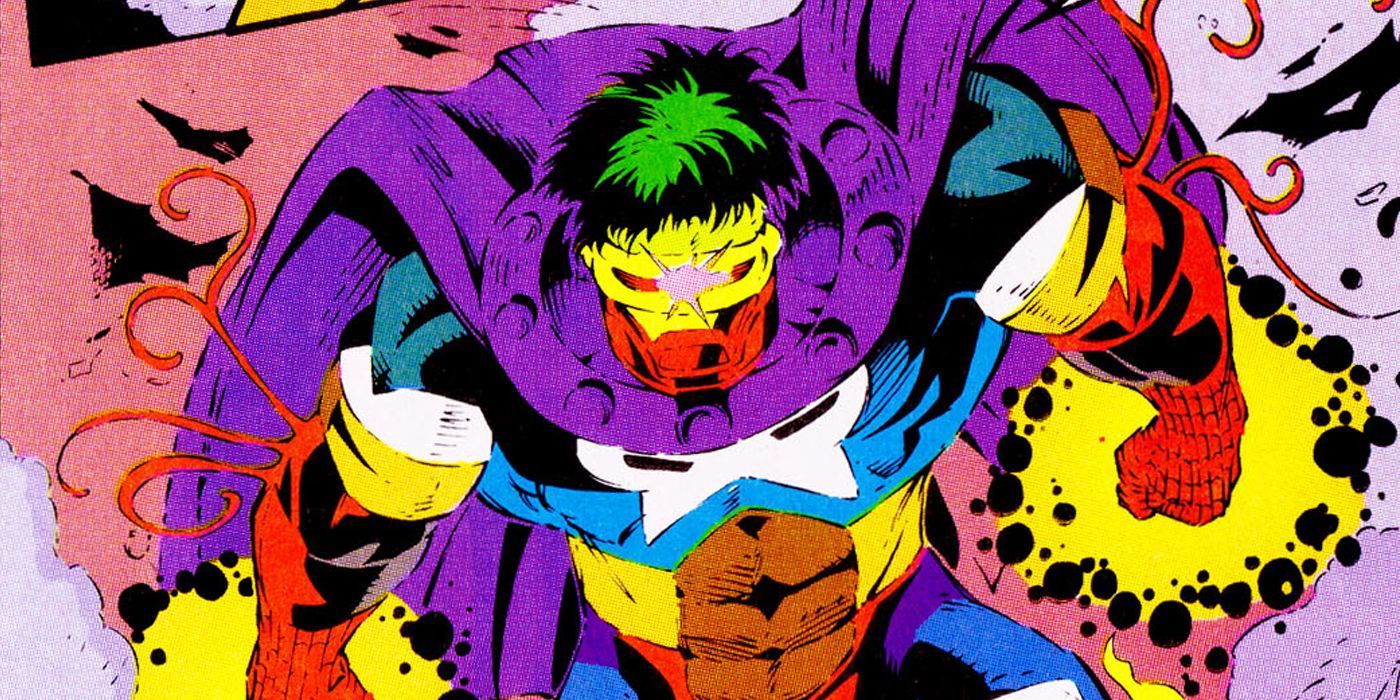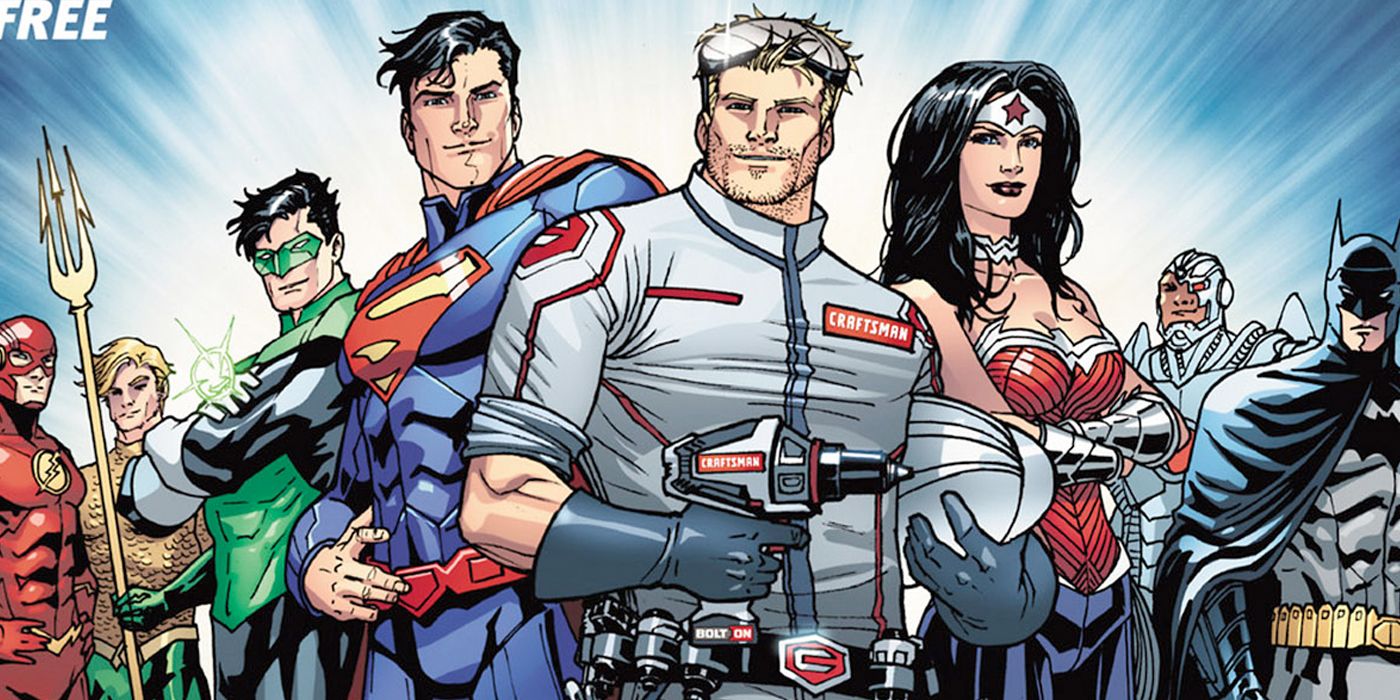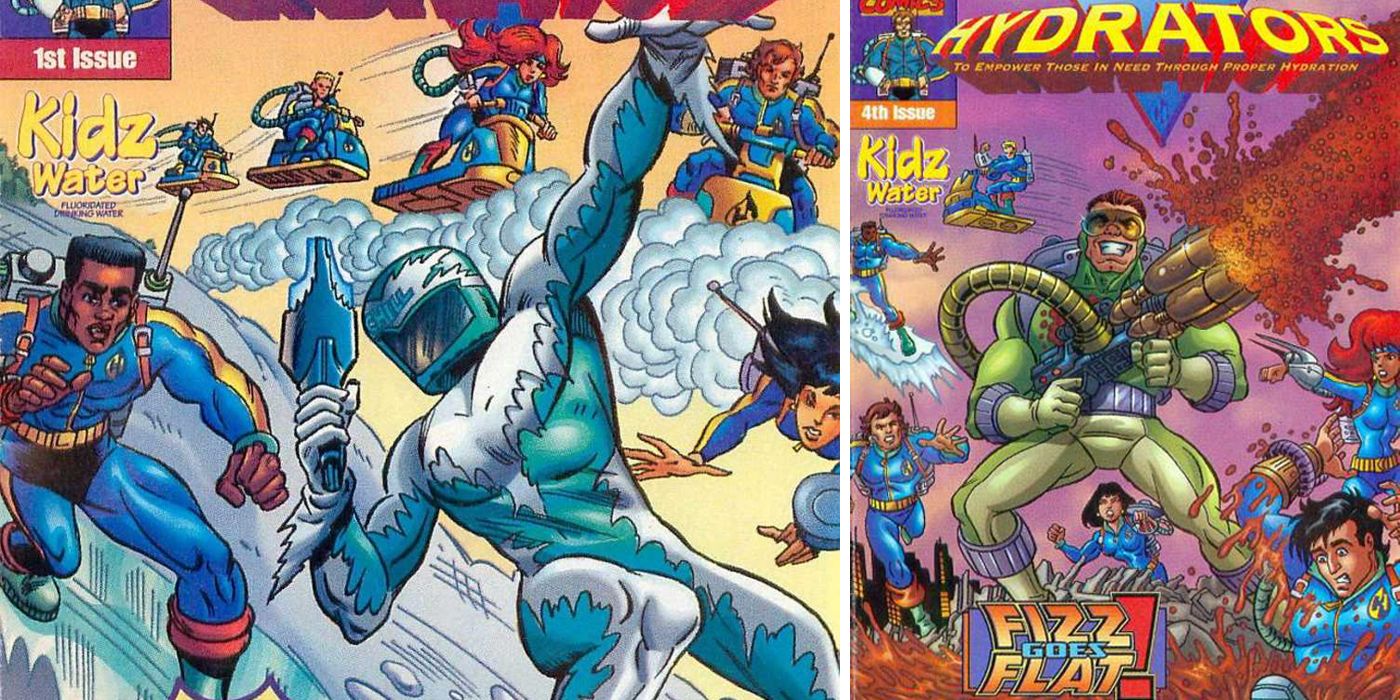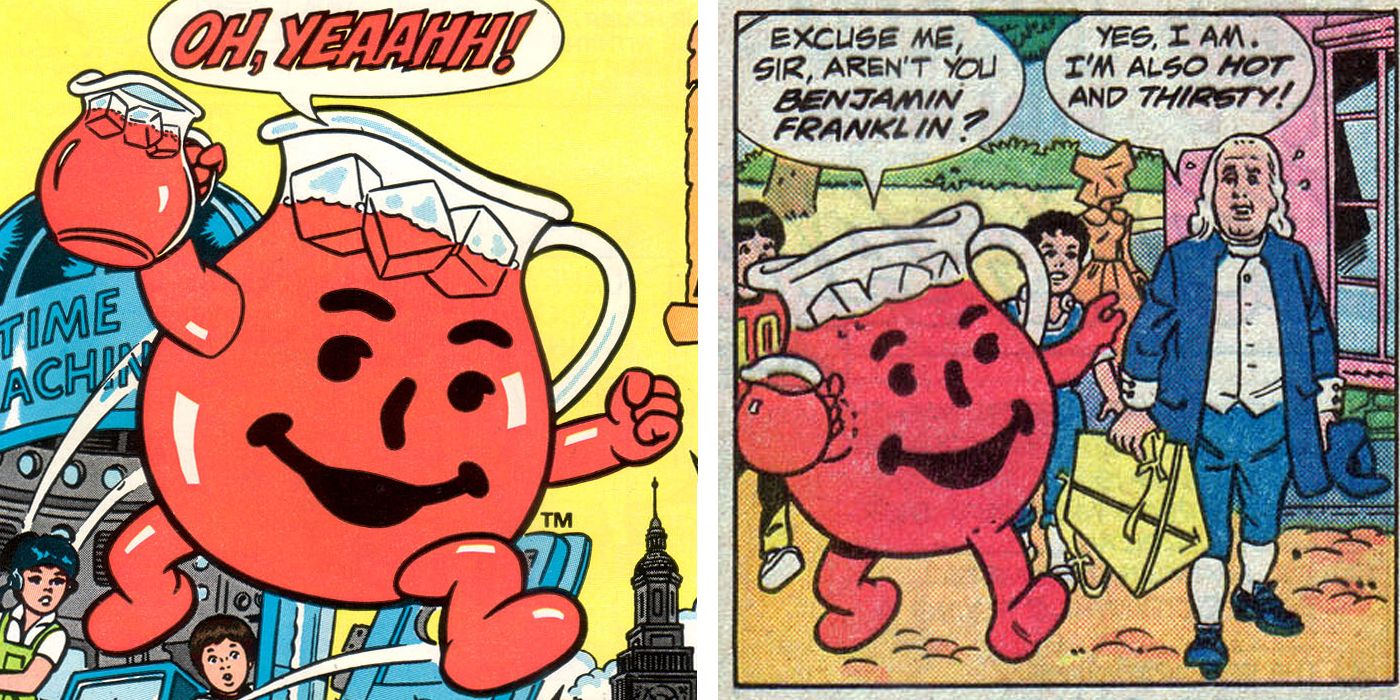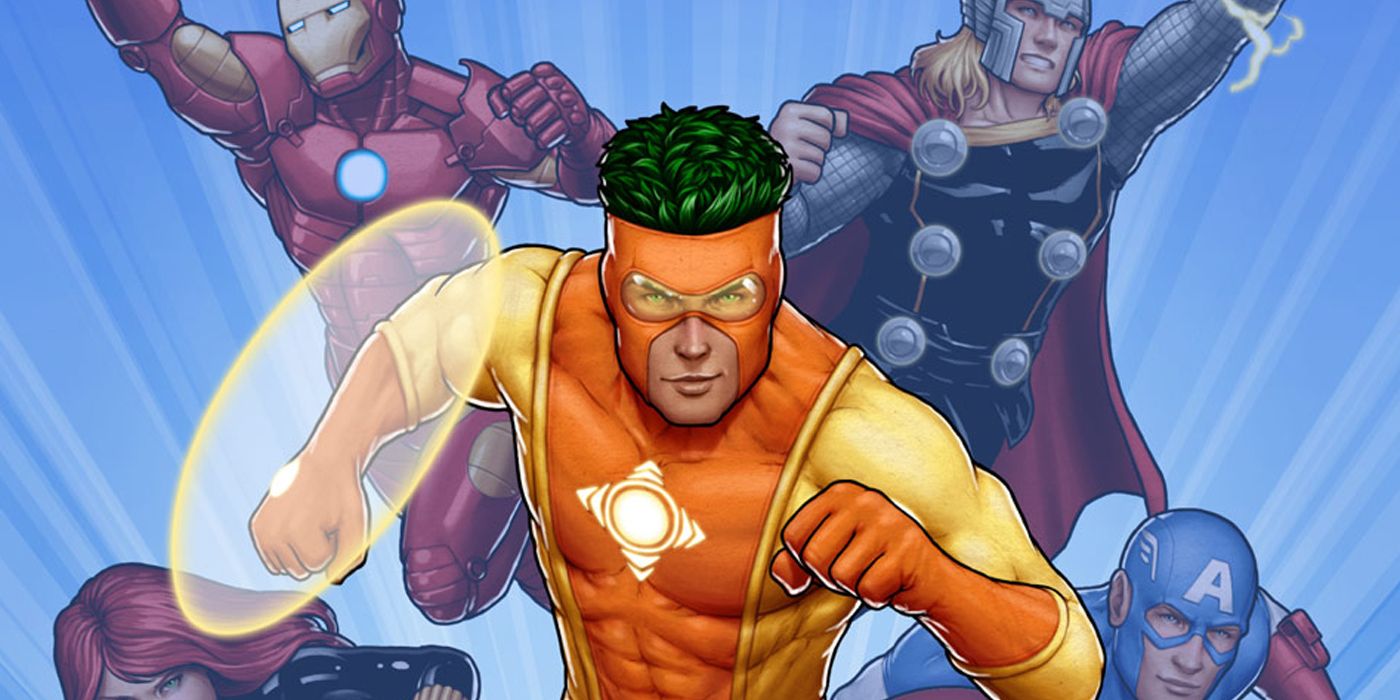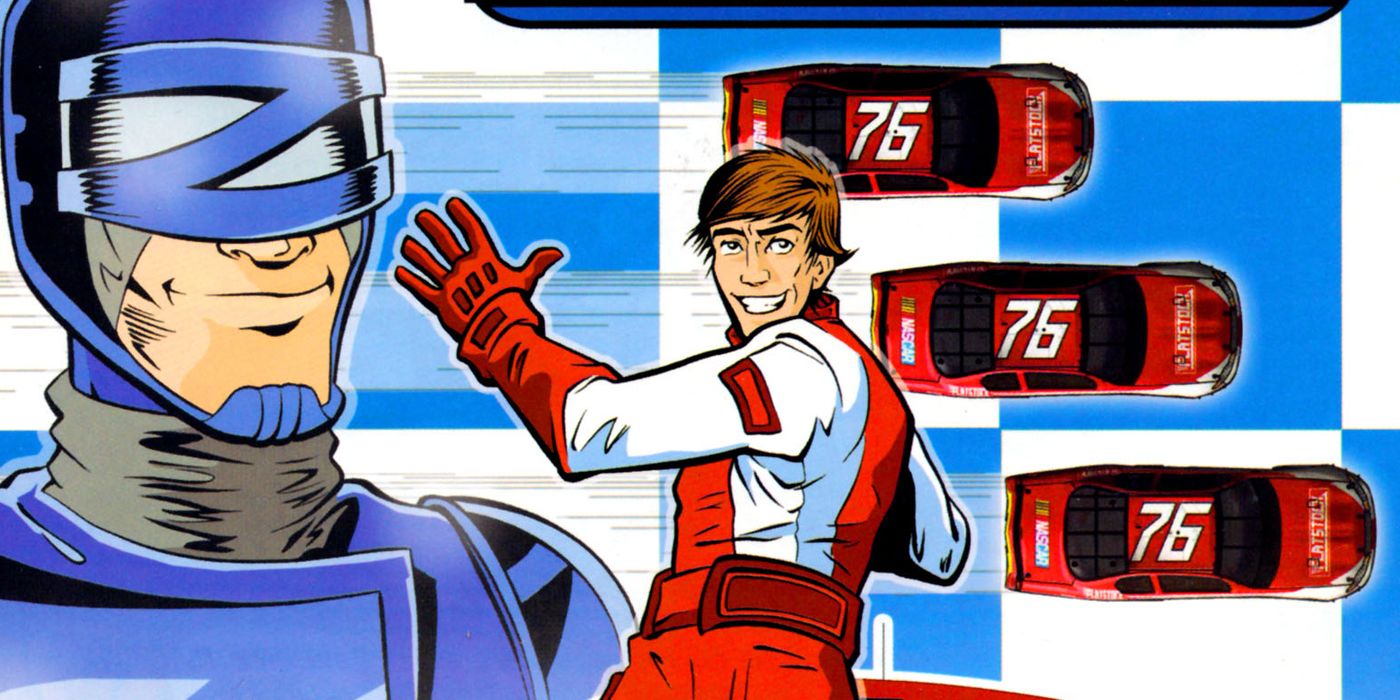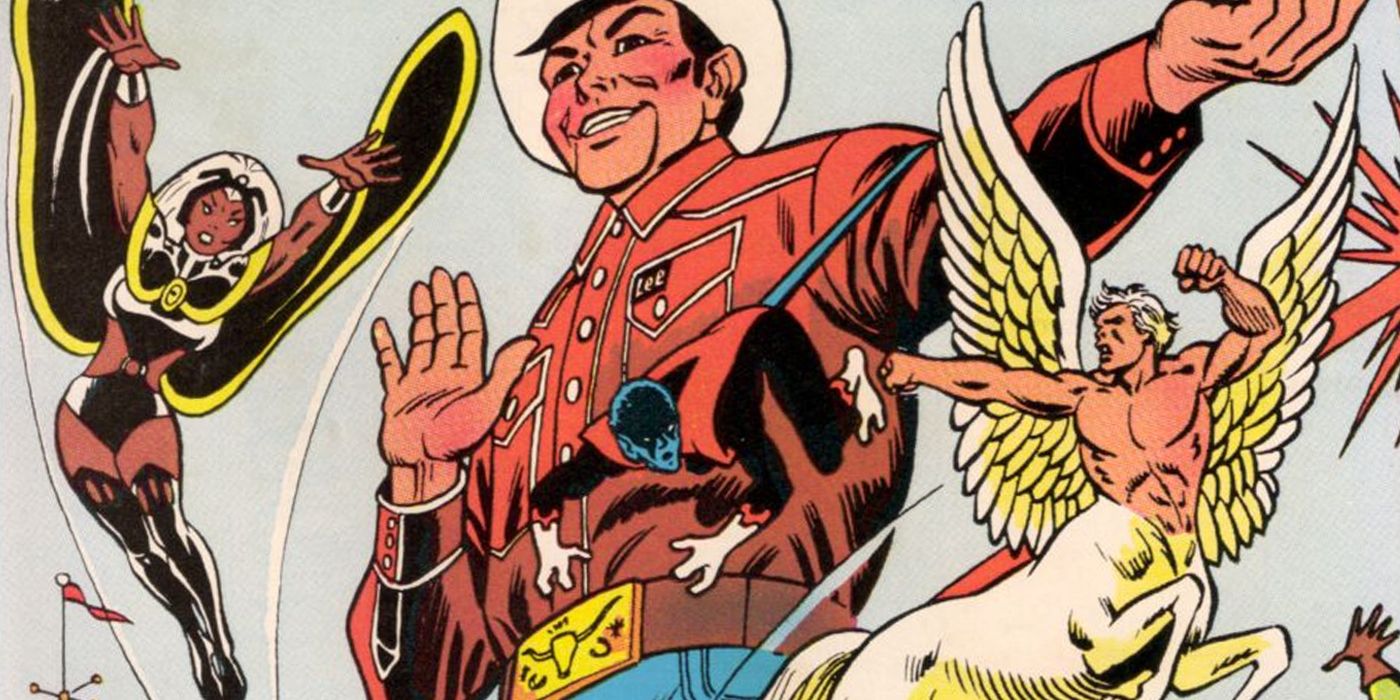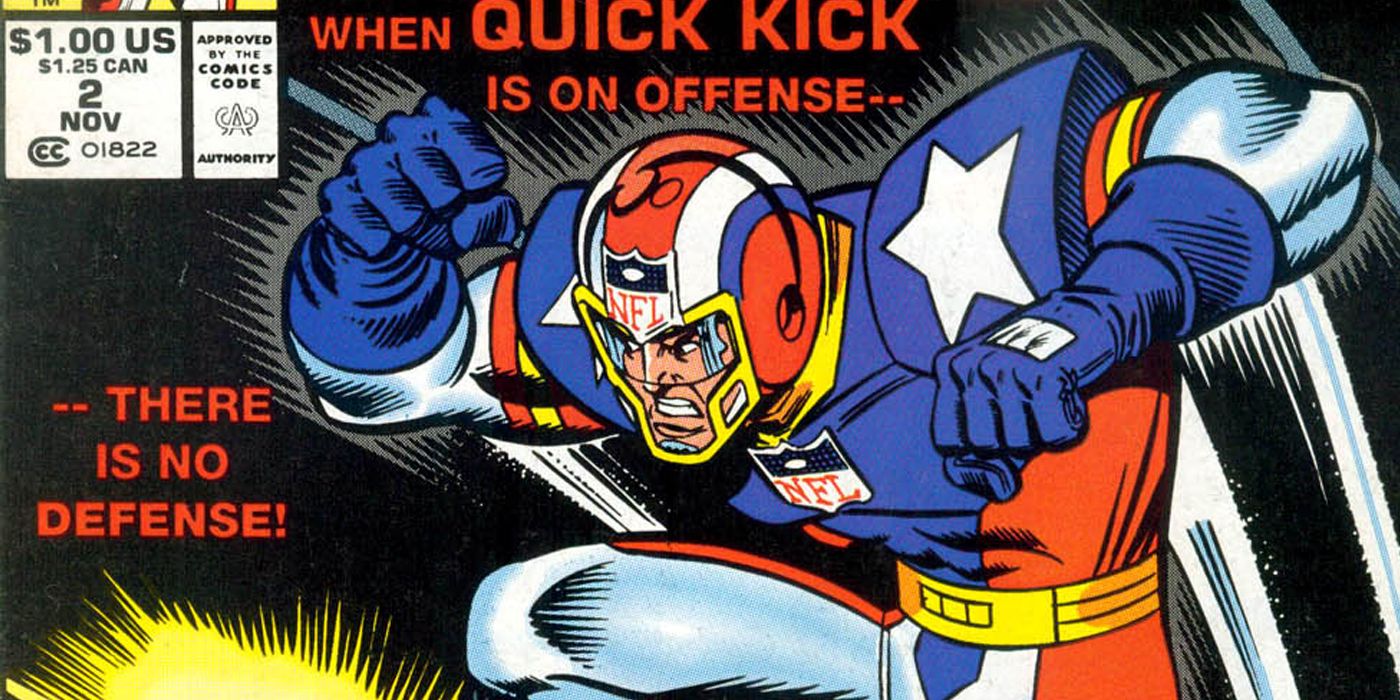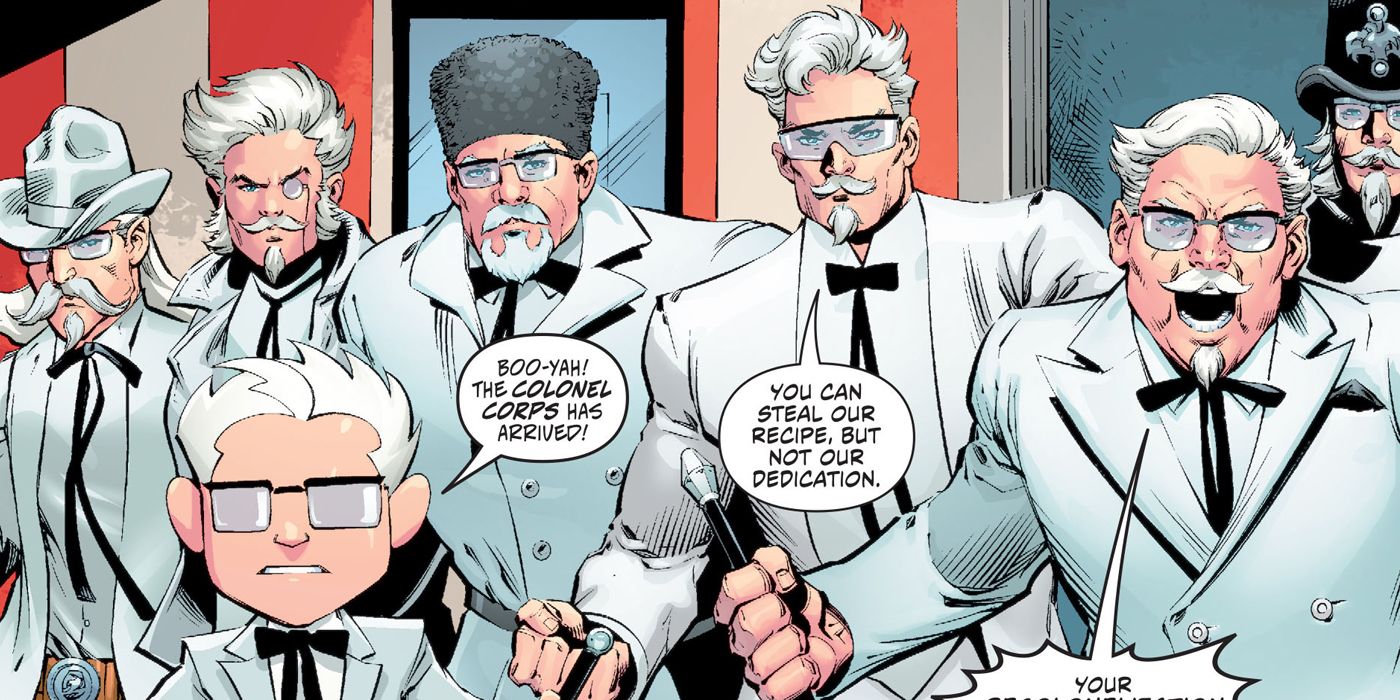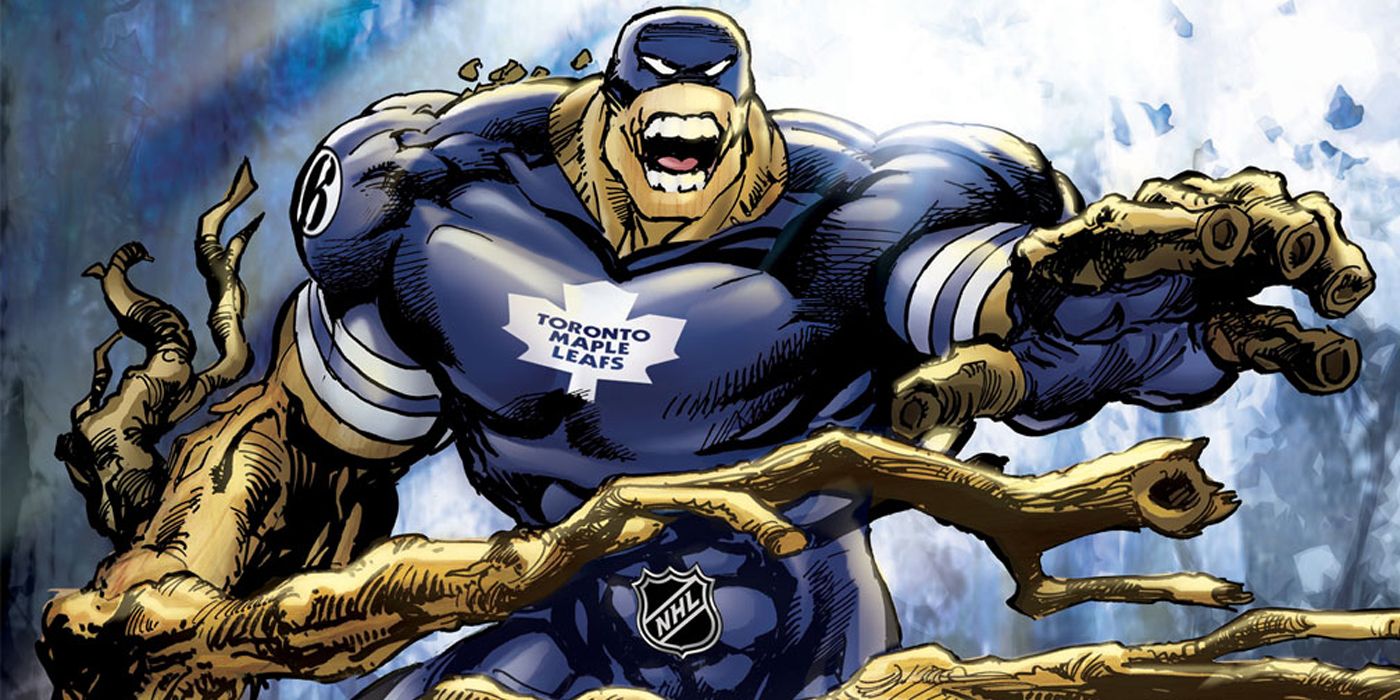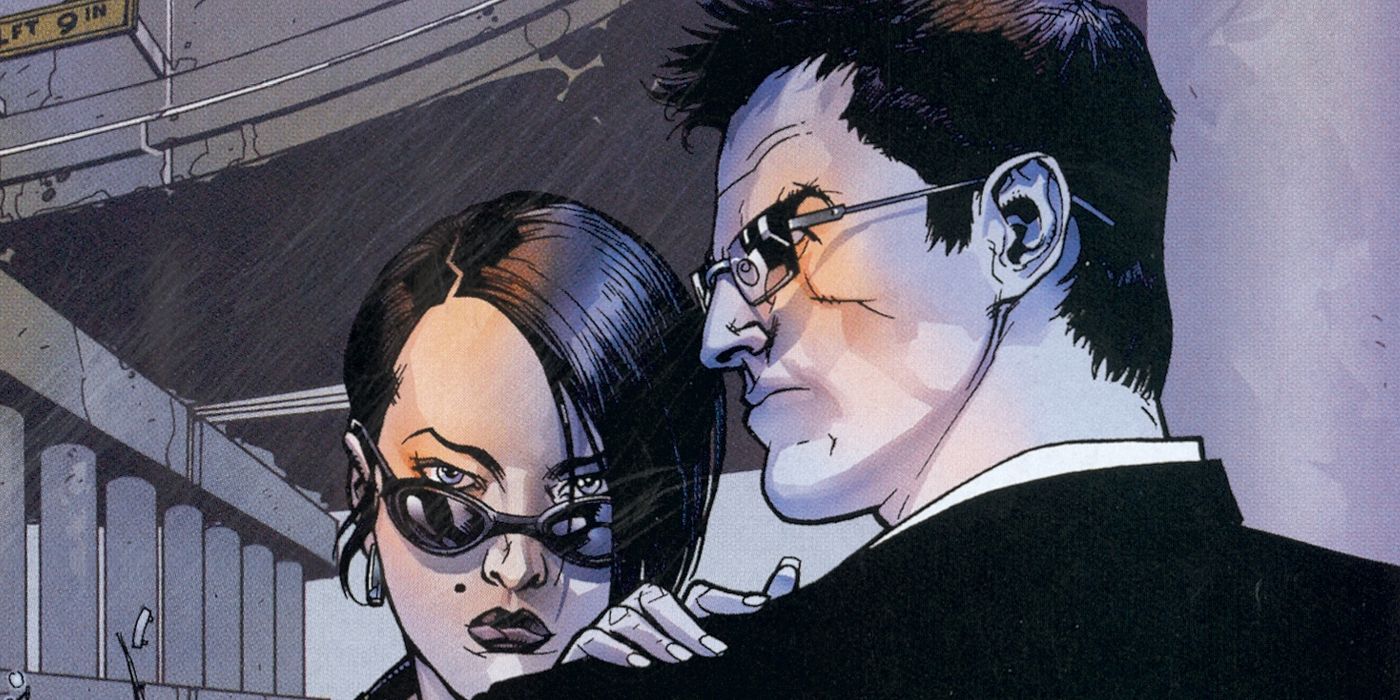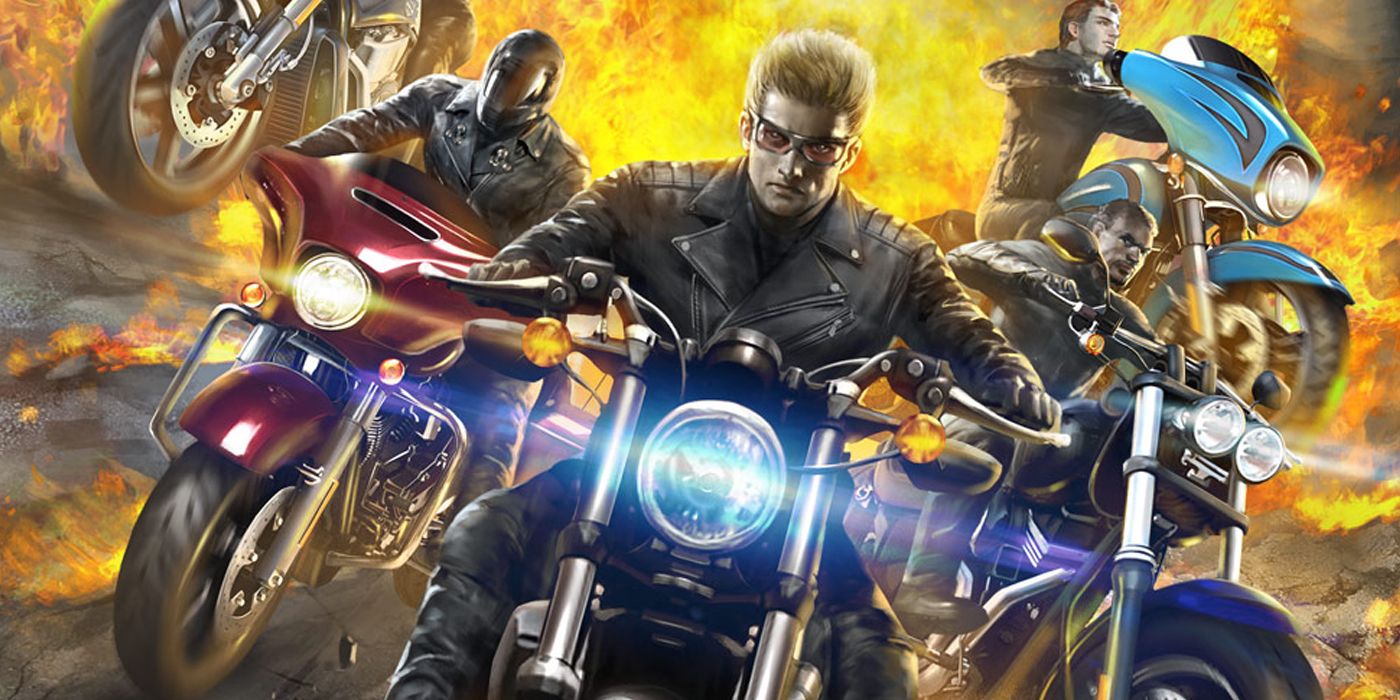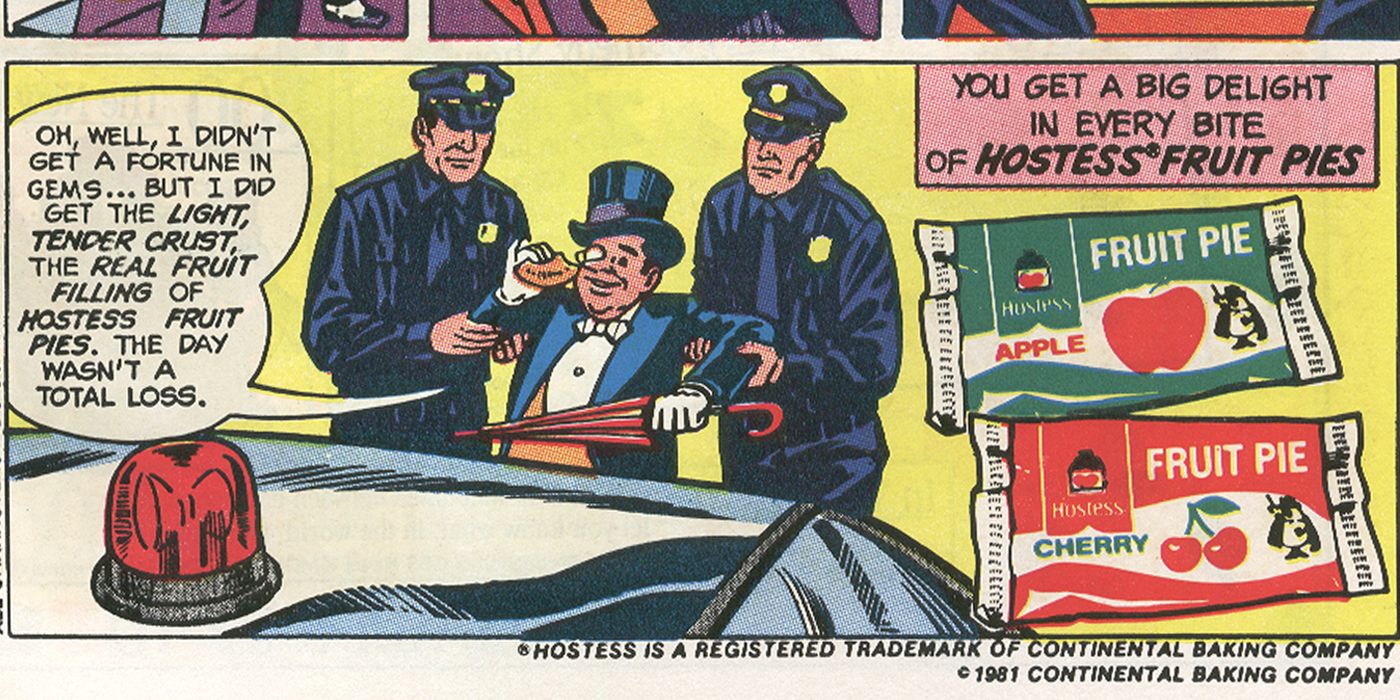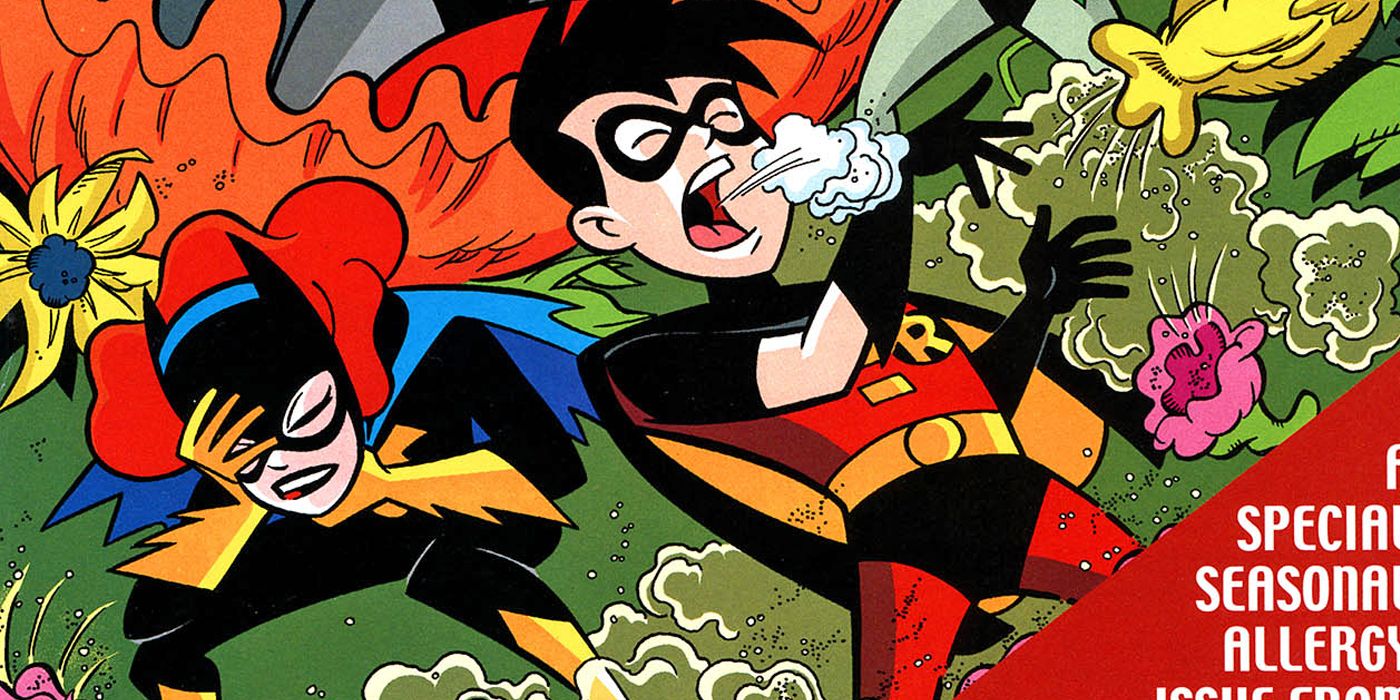Comic book advertising lasts forever. Commercials stop running and billboards get torn down, but comic ads sit in long boxes like little time capsules, waiting to be discovered again and again. But while a single ad can effectively linger, larger marketing investments like licensed promotional comics usually end up being more infamous than famous. The confluence of brand promotion and comic storytelling can make for some puzzling moments as familiar characters mingle with corporate mascots and shill consumer goods.
RELATED: The 15 Weirdest Crossovers in Comic Book History
We're taking a look back at some of the oddest moments in corporate-licensed comics to pop up over the years. In this list, we’re not looking at any PSAs that try to teach lessons, raise awareness or help public causes. All of these examples are trying to sell a brand or product to the reader with the help of a character, creator, or company from the world of comics.
15 Combo Man
In the fall of 1995, Combo Man made an eye-catching debut throughout the pages of Marvel Comics. He was a strange, garish combination of 14 Marvel heroes and villains stacked on top of one another, which led to some puzzling design choices like including the Human Torch’s flaming knees or the Hulk’s emerald hair. Licensed by the snack food, Combos, Combo Man had all of the powers of the heroes and villains he was made up of.
In 1996, one ashcan issue of “Combo Man” was published. With a script by Marvel legend, Mark Gruenwald, and art by Hector Collazo and Greg Adams, the story followed Rick Wilder as he and a backpack full of Combos and Marvel comics got zapped by an energy ray. After eating an irradiated Combo, he became Combo Man and used his plethora of powers to battle the defeat the Super-Adaptoid, a similarly multi-powered android. While the mascot was short-lived, the character predicted the sublimely absurd Amalgam Comics, a joint venture that saw Marvel and DC Comics temporarily combine most of their heroes, by a year.
14 The Craftsman Bolt-On System Saves the Justice League
In one of DC’s first promotional comics after the New 52 reboot, Craftsman Tools shined a light on the kind of background character that rarely gets a focus in comic books. The Technician was the Justice League’s handyman, an unpowered character who only had a tool belt full of Craftsman tools to keep the Hall of Justice running. In the descriptively-titled “Craftsman Bolt-On System Saves the Justice League,” the League was called out to fight classic DC villains the Royal Flush Gang, while the classic “Justice League” villain, the Key, tried to take over the Hall of Justice. The Technician successfully used the various functions of the Craftsman multi-tool to trap the Key and repaired the damage he created.
The 2012 comic, by Joshua Williamson and Christian Duce, bears a striking resemblance to Grant Morrison and Oscar Jimenez’s “Imaginary Stories” arc from 1997’s “JLA,” with the Craftsman Technician taking the place of Green Arrow. Curiously, this is also the first appearance of the Royal Flush Gang in the New 52 universe.
13 Kidz Water Hydrators
Created by the discontinued children’s beverage “Kidz Water,” the Kidz Water Hydrators starred in four six-page mini-comics that were packaged with various Marvel titles in 1999.While some of the Hydrators had water-related powers, all of the six team members used wrist-mounted “hydrophasers” and had water-based names like X-Stream and Vapor. They fought enemies like the soda-based villain Fizz and the Hydration Elimination Attack Team, H.E.A.T. to “empower those in need through proper hydration.” While warning kids about the dangers of dehydration has some merit, the Hydrators treat their product like it’s the elixir of life itself.
Published by “Marvel Custom Comics,” Marvel’s branded content division, the comics were fairly standard for promotional comics. With scripts and art by Michael Stewart, Al Milgrom, Steven Butler, and Al Gordon, these were inoffensive kid-friendly ads that were densely packed with characters. With so many heroes and villains all built around the concept of drinking water, it almost read like a hydration-focused version of “Captain Planet.” Ultimately, the promotion came to an end after inserting mini-comics into four months’ worth of Marvel titles.
12 Kool-Aid Man
The Kool-Aid Man has probably shown up in more comics than any other advertising mascot. The wall-smashing icon appeared in his own nine issue series from 1983 to 1989, initially published by Marvel then Archie Comics. The comics, all with art from longtime “Archie” artist Dan DeCarlo, were mostly extended versions of the typical Kool-Aid commercials where the Kool-Aid Man crashed into a hot setting and then gave thirsty children something to drink.
Operating from his pitcher-shaped headquarters, he usually fought off the Thirsties, general troublemakers that looked like angry sparks, and later Scorch, a dehydration-based villain with the catchphrase “Roast my toast!” But some of the stories took a more bizarre turn, especially when Kool-Aid man traveled back in time to Revolutionary War-era America. While there, the Kool-Aid Man met a thirsty Benjamin Franklin and stopped the Thirsties from preventing the Boston Tea Party. Shockingly, this comic is routinely left off of most lists of the greatest comic books of all time.
11 Captain Citrus
Captain Citrus, the mascot for Florida’s Department of Citrus, was originally a cape-wearing cartoon orange from outer space. As part of a $1M campaign to rebrand in an effort to boost orange juice sales, the Sunshine State sent the character to Marvel comics for a radical reinvention in 2014. The resulting character, James Polk, bonded to a pair of strange solar pods on his family’s orange grove. The pods gave him solar-based powers to create hard light objects like Green Lantern, fly, facilitate plant growth and produce blasts of “pure Florida sunshine.”
Over three issues by Ralph Macchio and Kevin Sharpe, the new Captain Citrus fought villains like the Leader and Kang the Conqueror alongside the Avengers. The green-haired hero took on the “Iron Man” villain Blizzard alone shortly after receiving his powers. In addition to serving as a spokesman for Florida orange growers, Captain Citrus was also used in various healthy eating campaigns.
10 NASCAR Heroes
On the surface, there’s nothing that strange about “NASCAR Heroes.” After being exposed to an experimental fuel, Jimmy Dash and his pit crew were given various standard super-powers, which they used to win races and fight bad guys. NASCAR has had similar fictional series before, with “NASCAR Racers,” a “Speed Racer”-esque animated series with comics that even had Chris Bachalo on art.
In 2009, “NASCAR Heroes” #5 was curiously nominated for one of the most prestigious awards in comics, the Harvey Award for Best Single Issue or Story. The Harvey Awards, which are decided by comics industry professionals, usually focus on acclaimed books like Chris Ware’s “Acme Novelty Library” and the seminal indie comic “Love and Rockets,” which were both nominated in the Best Single Issue category that year. While rumors of impropriety flew around the online comics community, the inclusion of this little-read racing comic was never explained. Ultimately, that year’s Harvey for the Best Single Issue went to the final issue of Brian K. Vaughan and Pia Guerra’s landmark Vertigo series “Y: The Last Man.”
9 X-Men at the Texas State Fair
While the X-Men have appeared in more than their fair share of promotional comics, one of their first and most curious licensed appearances saw them advertise an event that lasted for less than a month. In 1983’s “Uncanny X-Men at the State Fair of Texas” by Jim Salicrup, David Kraft, Kerry Gammill, Alan Kupperberg, and Chic Stone, the X-Men travel to Dallas, Texas to search for a new mutant, take in the State Fair, and attend college football’s Cotton Bowl. The young mutant Danny Wiley, a ranch hand who can turn into a centaur, takes the name Eques and ultimately helps the X-Men defeat Magneto but refuses membership on the team.
Given their popularity in the 1980s and 1990s, the X-Men showed up to recruit lots of new mutants in licensed comics at the time. While this was the X-Men’s only appearance, the now-defunct “Dallas Times Herald” released another five Marvel supplements, all staring Spider-Man doing various things around Dallas. Most notably, Spider-Man, Iceman and Firestar saved a performance of “The Nutcracker” by the Dallas Ballet and Spider-Man teamed up with the NFL’s Dallas Cowboys.
8 NFL SuperPro
Speaking of the NFL, “NFL SuperPro” is widely considered one of the worst licensed comics ever made. Over one special and 12 regular issues starting in 1991, Marvel published this infamous series that followed the exploits of Phil Grayfield. The former football player received powers after getting doused in chemicals and then donned an experimental bulletproof suit modeled after a football uniform. With the NFL’s logo emblazoned across his chest and helmet, SuperPro met Spider-Man and Captain America during his time in the Marvel Universe.
Thousands of copies of Fabian Nicieza and Jose Delbo’s special that introduced NFL SuperPro were given away at football games. “NFL SuperPro” featured several football-related villains like football player-turned-ninja Quick Kick and Instant Replay, an assassin who could travel back and forth through time. While the series was criticized for the amount of marketing, one issue was pulled a month after release at the request of the Hopi nation. While NFL SuperPro has remained absent since the 1990s, the NFL, Gatorade and DC published two specials featuring star players Cam Newton and JJ Watt.
7 Adventures@eBay
With the surprisingly strong creative team of Greg Rucka, Jen Van Meter and Judd Winick, this 2000 mini-comic taught readers how to buy comic books online. In “Adventures@eBay,” the “Famous eBay Apple Man,” a character that never appeared in any other form of media, illustrated the process of finding and bidding on comics through eBay’s “Comicsorama” portal. After explaining the basics of the site, the story followed a comic fan named Shira as she fought a collection-eating monster named “Collectioneater” by buying various superhero costumes off of the auction site.
This mini-comic bagged with an issue of the comic news leader “Wizard Magazine.” It’s a light tale that pokes some gentle fun at comic concepts like John Constantine and Witchblade that “Wizard” readers would be familiar with, made only light by Winick’s “Barry Ween”-esque art. While eBay still exists today, this is an heirloom of the first dot-com bubble. Needless to say, Shira and Apple Man's bubble popped with the dot-com one.
6 The KFC Colonel Meets the DC Multiverse
In two of the most elaborate licensed promotional comics ever-published, DC and Kentucky Fried Chicken turned the franchise’s founder/mascot into a full-fledged resident of the DC multiverse. In 2015’s “The Colonel of Two Worlds,” Colonel Sanders joined Flash and Green Lantern to fight his evil Earth-3 counterpart Colonel Sunder, who sold low-quality friend chicken. While the comic, written by Tony Bedard and Shane Edwards and illustrated by Tom Derenick and Trevor Scott, is one of the more creative integrations of comics and commerce, it’s nothing compared to it’s follow-up, “KFC: Crisis of Infinite Colonels.”
Written by Bedard and illustrated by Derenick and Scott, this 2016 comic took the Colonel on a tour of the DC multiverse. Sunder made every universe’s Colonel forget all but one of KFC’s trademark “11 herbs and spices,. The Colonels and Flashes from worlds as varied as “Kingdom Come,” “Gotham by Gaslight” and “Teen Titans Go!” came together to reassemble the recipe and defeat Sunder and the gorilla Colonel Grodd. Coming out after several multiverse-focused storylines form Marvel and DC, this comic showed an incredible amount of awareness about ongoing trends in the comics world.
5 The NHL Guardian Project
By every metric, the NHL’s Guardian Project did not work. The Guardian Project was the NHL’s ambitious 2011 venture to create a superhero mascot for each of its 30 hockey teams. Ostensibly created by Stan Lee, with help from comic veterans like Neal Adams and Chuck Dixon, these characters were introduced over the course of a month in January 2011 with six-page introductory web comics. These comics were collected in “The Guardian Project,” a graphic novel which showed that the Guardians were the creation of teenage hockey fan Mike Mason, who brought the characters he created to life when Devin Dark attacked Earth.
Despite a multi-media investment by NBCUniversal and a short animated film that aired during the second intermission at the 2011 NHL All-Star game, the overall effort quickly failed and became the subject of multiple lawsuits. Given superheroes' wide mainstream popularity, the idea of combining comics and sports certainly has some merit, but as the Marvel-designed BrooklyKnight, a former mascot for the Brooklyn Nets, showed, superheroes don’t make the best sports mascots.
4 BMW's "The Hire"
In 2001, BMW launched one of the most forward-thinking ad campaigns of all time with “The Hire.” The campaign followed the Hire, played by Clive Owen, a driver for hire who ran various action-packed tasks over eight short films made by filmmakers like Tony Scott and Alejandro Iñárritu with all-star casts. In 2004, Dark Horse Comics published four issues of a planned six-issue series that followed the same formula.
“BMW Film Presents: The Hire” featured strong work by Matt Wagner, Bruce Campbell, Mark Waid, Kurt Busiek and Kilian Plunkett, among others. Like the short films, these stand-alone action-adventure comics are far better than they have any right to be. Although delays plagued the series, possibly the reason for the cancellation of the last two issues, a collected edition of the series was released in 2006. After a decade off the air, BMW announced that it would revive the campaign for the YouTube era next week, with Clive Owen set to reprise his role as the Hire alongside Jon Bernthal and Dakota Fanning.
3 The Road Force
One of the more visible branded collaborations in recent times has been between Harley- Davidson and Marvel. After 2012’s “Harley-Davidson/Avengers,” the Road Force, a group of motorcycle-based heroes, popped up in multiple advertisements and licensed comics. Jeff Parker, Manuel Garcia, and Pow Rodrix introduced the team in that two-issue digital miniseries by dropping them into the middle of a solid Avengers story. With names like Highway Bandit and Polar Storm, these characters road super-powered motorcycles that could shoot lightning and a “transforming isotope,” which combined to form a “shockwave annihilator” beam. An expanded version of this Road Force appeared in a 2013 promotion with Iron Man.
Later in 2013, a second iteration of the Road Force debuted in “Harley Davidson Presents Thor in The Origin of Road Force” by William Harms, Cafu, and Miguel Sepulveda. This iteration of the team was lead by an alien Dire Wraith in human form named Shadow and had motorcycles with customized individual powers. This version of the team continued to show up in other promotions with Captain America and starred in their own one-page comics on the back covers of several Marvel titles.
2 Hostess Snack Cakes
While no official comic book was ever released, any discussion of branded content in comics would be incomplete without mentioning the famous Hostess snack cake ads. In the 1970s and 1980s, these one-page comic ads ran across the industry in titles from Marvel, DC, Archie, and other publishers. The now-familiar formula many of these strips followed saw heroes defeat villains by distracting them or tempting them with the sugary allure of Hostess Fruit Pies, Cup Cakes or Twinkies.
With pencils from industry legends like Frank Miller, Dave Cockrum and Sal Buscema, among others, these ads were a perfect fit for the comics of the time. Curiously, none of Marvel or DC’s heroes ever actually ate one of the company’s sweet treats, although their supporting characters and characters from other companies did. Despite Hostess’ fairly recent financial troubles, these ads are fondly remembered and are routinely parodied across the media landscape, with online collections of the ads solidifying their status as one of the first memes to go viral across the Internet.
1 Claritin Presents Batman
In this 1999 comic that went directly into controversial uncharted territory, Batman tried to sell children prescription drugs. In 1999’s “Claritin Presents Batman,” veteran creators Christopher Priest, Joe Staton, and Mike DeCarlo created a very decent story where the iconic “The New Batman Adventures” versions of Batman, Robin, and Batgirl fought Poison Ivy. After Robin became groggy after taking an unspecified allergy medication during an encounter with Ivy, Batman sent Tim Drake and Alfred to a doctor, who prescribed an unspecified non-drowsy allergy medication. To the book’s credit, no one ever mentioned Claritin-brand medicine by name, but the lesser side effects of the prescribed medication allowed Robin to defeat Ivy and save the day.
Although an opening letter on the inside of the front cover stated that part of the book’s purpose was to show young readers that seasonal allergies were a perfectly normal condition, the focus on impediments caused by side effects from a different allergy medication took things in a decidedly more commercial direction. Despite this book’s example, many pharmaceutical company-branded comics have focused on raising awareness about various conditions instead of prescribing specific remedies.
Have a favorite licensed comic? Let us know in the comments below!

